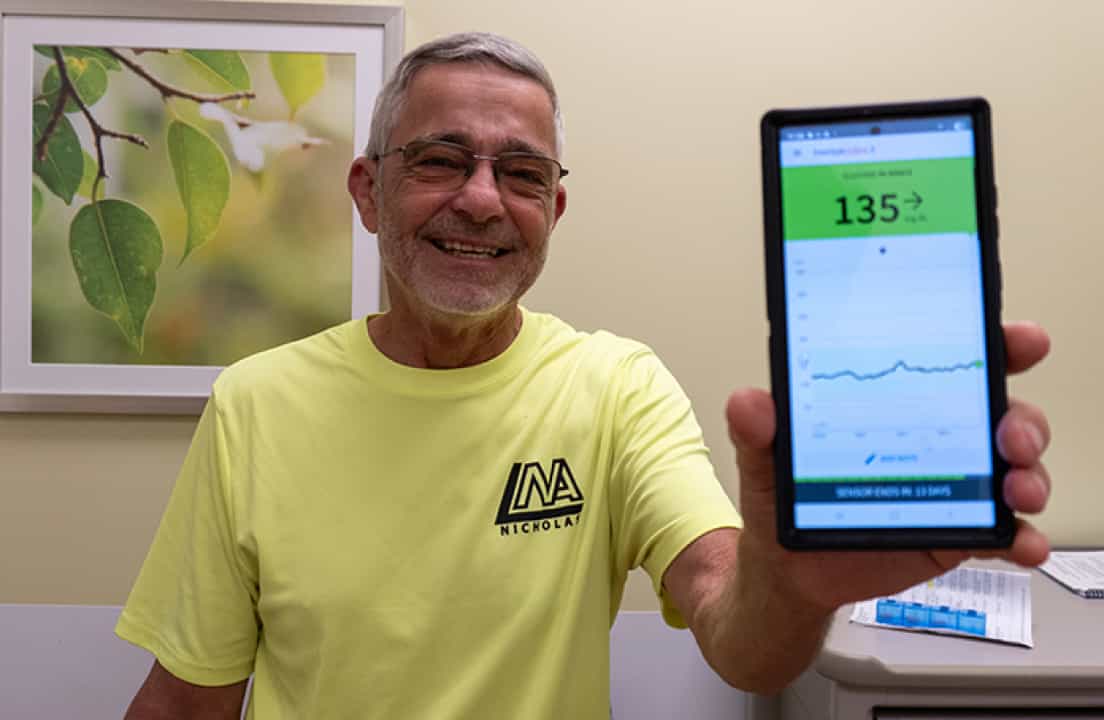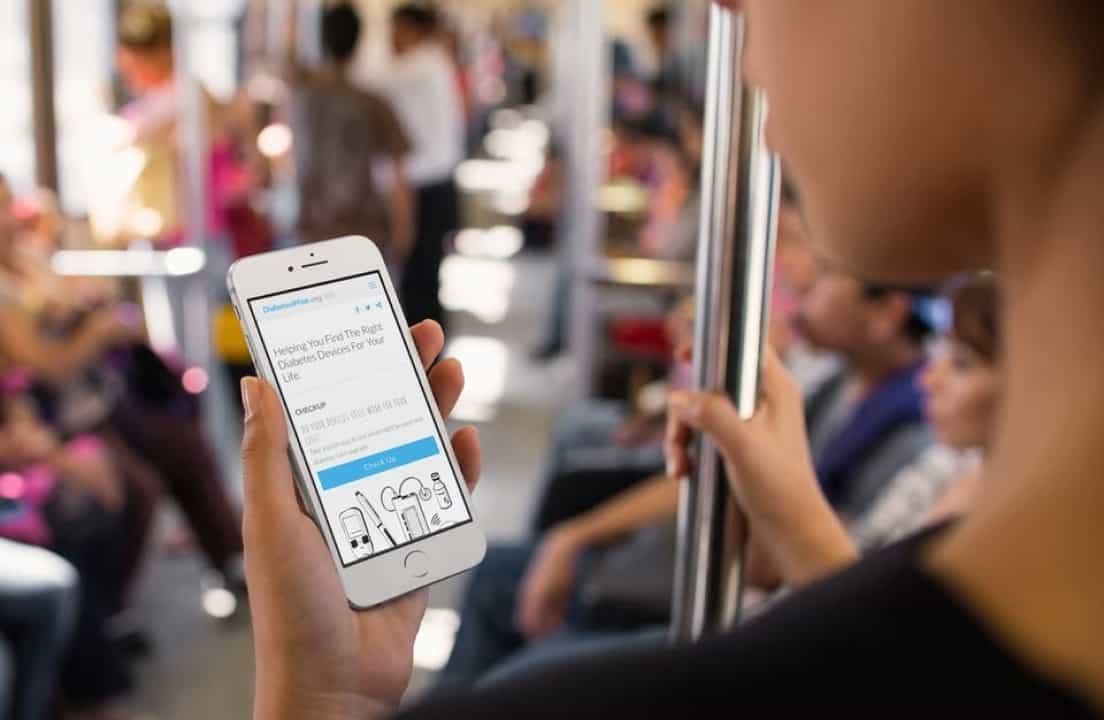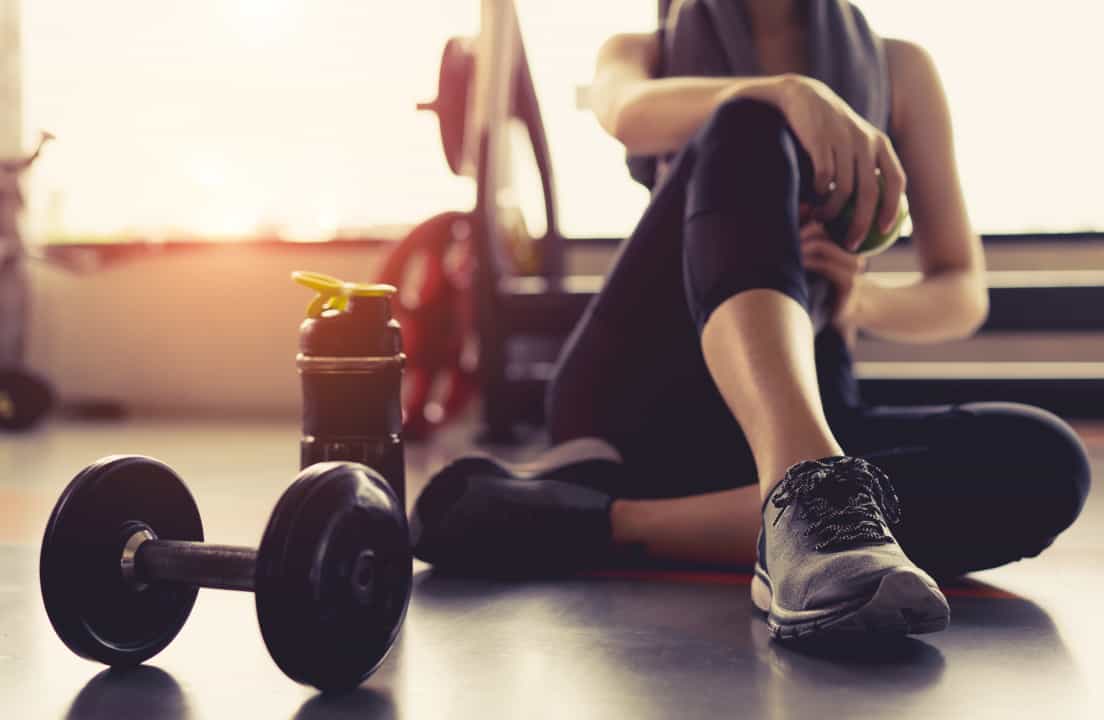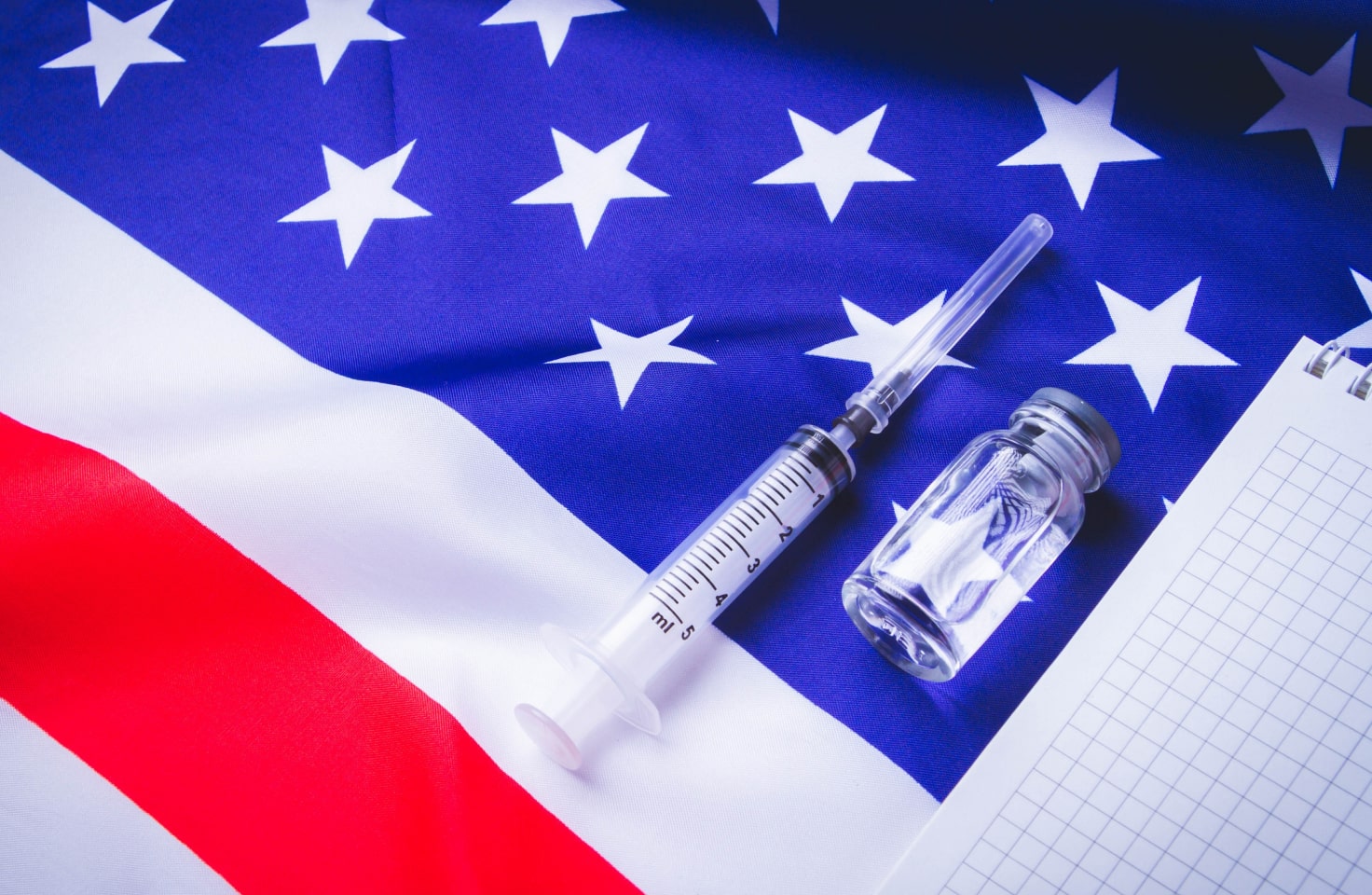T1D Guide
T1D Strong News
Personal Stories
Resources
T1D Misdiagnosis
T1D Early Detection
Research/Clinical Trials
Type 1 Diabetes and Exercise
Exercise significantly improves your body in many ways. These include improving your cardiovascular system, weight loss, and brain and mental health. Physical activity strengthens bones and muscles, increases energy, and provides more flexibility. In addition, it has been noted to contribute to improved diabetes management, reduce insulin usage, and help people with diabetes reach their target A1C.

Healthcare Professional Guidance
Before starting any exercise regime, it's important to consult with your health care team first. Your health care provider knows your medication, insulin settings, blood pressure, and all around diabetes care. They can help assess your fitness goals while managing your insulin doses and blood glucose response - all the while keeping you in a safe range.
If you're newly diagnosed with type 1 diabetes (T1D) and considering intensity interval training, moderate intensity exercise, or serious resistance exercise such as weight lifting - it's important to know the effects it has on your glucose levels. Even moderate exercise, like a walk around the park, can bring on a low blood sugar episode.
Different Types of Exercise
Exercise contributes to improved blood sugar management, cardiovascular and mental health. It also helps with reducing diabetes complications later in life.
Did you know that different workouts affect your blood glucose levels differently?
The Centers for Disease Control and Prevention (CDC) recommends adults should aim for at least 150 minutes of moderate or vigorous weekly activity. This guidance is equivalent to 30 minutes daily, five days per week.
Aerobic Exercise
The American Diabetes Association (ADA) recommends 30 minutes of aerobic exercise serval days a week. Aerobic exercise includes light to moderately intense workouts like the following:
- Running
- Swimming
- Biking
- High fitness aerobics
Anaerobic Exercise
It's important to know that anaerobic exercise and resistance activities are typically shorter in duration but have a higher intensity - and can raise blood glucose levels, also called postexercise hyperglycemia. The added adrenaline spike may cause high blood sugar.
Some anaerobic types of exercise include:
- Sprinting
- Gymnastics
- Weight lifting
Whichever type of exercise you choose, just know it may cause risky fluctuations in blood sugar levels, so it's best to be prepared for low blood sugar. Today, there are glucose gels and fast-acting tablets that fit easily in your pocket to take on the go. Speak with your diabetes team to know what's best for you.
Regular physical activity can improve your muscle strength and boost your endurance. Exercise delivers oxygen and nutrients to your tissues and helps your cardiovascular system work more efficiently. And when your heart and lung health improve, you have more energy to tackle daily chores and challenges.
Regular exercise and physical activity may:
- Help you control your weight.
- Reduce your risk of heart disease.
- Help your body manage blood sugar and insulin levels.
- Help you quit smoking.
- Improve your mental health and mood.
- Help keep your thinking, learning, and judgment skills sharp as you age.
The value of exercise is an extraordinary gift, as it contributes to a body’s health and wellness.
Continuous Glucose Monitoring
Whether you use a blood glucose monitor (BGM) or a wearable continuous glucose monitor (CGM), T1Ds are encouraged to watch glucose levels before, during and after exercise while reaching their fitness goals.
The National Institutes of Health cites CGMs' several positive effects on diabetes management, include increased time in range (TIR), optimized therapy, improved glycemic control and reduced insulin resistance.
Important Workout Factors
Stay Hydrated
No matter how much exercise you are doing or for how long, it’s crucial to have water on hand to stay hydrated. Also essential is a fast-acting glucose source (glucose tablet, gel, sugary beverage) in case your blood sugar drops.
Aerobic exercises generally drop your blood sugar level during or immediately after the activity, and anaerobic exercises like weightlifting or short bursts of sprinting can increase blood sugar levels during the workout.
Check Blood Sugar Levels
It’s vital to check your blood glucose levels before, after, and midway through an exercise. I always have a snack if my blood sugar is 90 or below since I am certain it will continue dropping; if my blood sugar is above 250, I will skip my workout until later.
Pro Tip: Continuous glucose monitoring can be helpful, but remember that the CGM readings can be delayed by up to 20-30 minutes in some cases during certain types of exercise.

The more you exercise and analyze the results, the more you’ll learn how different types of exercise affect your body and blood sugar levels. Various workouts can bring a variety of blood sugar readings afterward. Regardless of my training, it always includes constant blood sugar monitoring (via CGM) and keeping a glucose source close by. The two most valuable things for my health at that time.
Carb Up
T1Ds should always check blood glucose levels before exercising and eat a small snack if they are below 100 mg/dL. The low-carb snack should contain 15-30 grams of carbohydrates. The ADA recommends combining a protein source with a carb source to prevent lows.
Some examples include:
- ½ cup of fruit juice or regular soda (not diet)
- A banana with nut butter
- Hummus or low-fat cheese with crackers
- Glucose tablets
- 10 to 20 grams of glucose products, which come in forms such as gels, powders and tablets
- 1 tablespoon of honey or sugar
- A handful of trail mix
- Small protein or granola bar
If you see your blood sugar level dropping during your afternoon exercise, additional carbohydrate intake may be necessary.
Some helpful tips to avoid lows during a workout include:
- Reducing your bolus or basal insulin slightly
- Make sure your blood sugar level is about 140 mg/dL before a workout
- Try different food types and find ones that don't upset your stomach
Monitoring blood sugar after a workout is equally important. If you see yourself dipping, try having a snack with slower-acting carbohydrates, like dried fruit, a half-turkey sandwich, or low-fat yogurt.
The Benefits of Walking
One of the easiest, most affordable and most effective ways to help your body stay sugar-steady? A post-meal walk as two to five minutes is shown to impact lowering blood sugar levels, and the benefits multiply the more steps you take, and the more often you take them.
A five-minute walk after a meal can offer our bodies an extraordinary gift.
Walking and other exercise help increase insulin sensitivity, making our bodies more efficient at managing our blood sugar. And, as crazy as it sounds, it gives you more energy and endurance!
Weight Lifting for Your Health
Additionally, it is estimated that resistance training can reduce your A1C level by approximately 0.5-1%. If your workout includes aerobic exercise, this contributes to your numbers reducing as well. Even a slight decrease in your A1c helps significantly in the long and short run.
I enjoy early morning workouts since I generally don’t have excess insulin in my body from having a meal that includes an insulin bolus. This makes it easier for me since the blood sugar is generally stable and has few fluctuations. It’s one less thing to worry about, and my basal rate is usually reduced during this time.

Workout Basics for T1D:
- Always have a fast-acting glucose source close by. Even on days when blood sugars start out high, they can quickly drop at the most unexpected times.
- Blood sugars generally remain lower throughout the day and sometimes into the next day. Tracking how long your blood sugar stays lower is extremely helpful for identifying workout trends.
- Adjust or suspend your basal rates during cardio workouts and the rest of the day. Cardi exercise generally decreases your insulin needs for up to 24 hours.
- Strength training exercises are also significant contributors to our health. However, blood sugars can often rise during strength training.
- When I first started, I found that having a written log of my workout and blood sugar numbers helped. Seeing a “track” record of my blood sugar levels before, during and after my workout helped tremendously when planning future activities.
- CGMs are extremely helpful, but the numbers can be off by 10-30 minutes. Having a finger stick monitor is good to double-check the numbers to ensure everything works correctly.
- If you haven’t exercised in a while, starting out small is often a good idea for building a consistent workout. A five-minute walk is better than no walk, and you can build up time from there, whatever and wherever you are comfortable starting. Home is an excellent place for a workout. You can start with light hand weight and build up from there.
- Another significant contributing factor in a workout is the stress relief and strength you build knowing that you have done something extraordinary for yourself.
- Exercise delivers oxygen and nutrients to your tissues and helps your cardiovascular system work more efficiently.
I found this to be a helpful resource to see how various workouts can affect me:
https://www.jdrf.org/t1d-resources/living-with-t1d/exercise/exercise-impact/

Living Your Best Life
Regular physical activity improves diabetes care, muscle strength, and boosts endurance. Exercise delivers oxygen and nutrients to your tissues and helps your cardiovascular system work more efficiently. When your heart and lung health improve, you have more energy to tackle daily chores and challenges! It all adds up to something good!
There is so much variation in the world of exercise and numerous options; you should be able to find something you enjoy doing—walking, running, spinning, swimming, or yoga. It’s a short list, but you can always find a way to move! Some things can be done without even leaving home – dancing, walking, mini-tramps, workout programs, weights and more.


.webp)





.webp)
.jpg)
.jpeg)
.jpg)




.webp)
.jpg)



.jpg)




.jpg)

.jpg)



.jpg)

.jpg)




.jpg)
.jpg)
.jpg)
.jpg)
.jpg)
.jpg)
.jpg)

.jpg)
.jpg)

.jpg)



.jpg)
.jpg)
.jpg)

.jpg)

.jpg)














.jpg)


.jpg)







.webp)











.webp)























.webp)